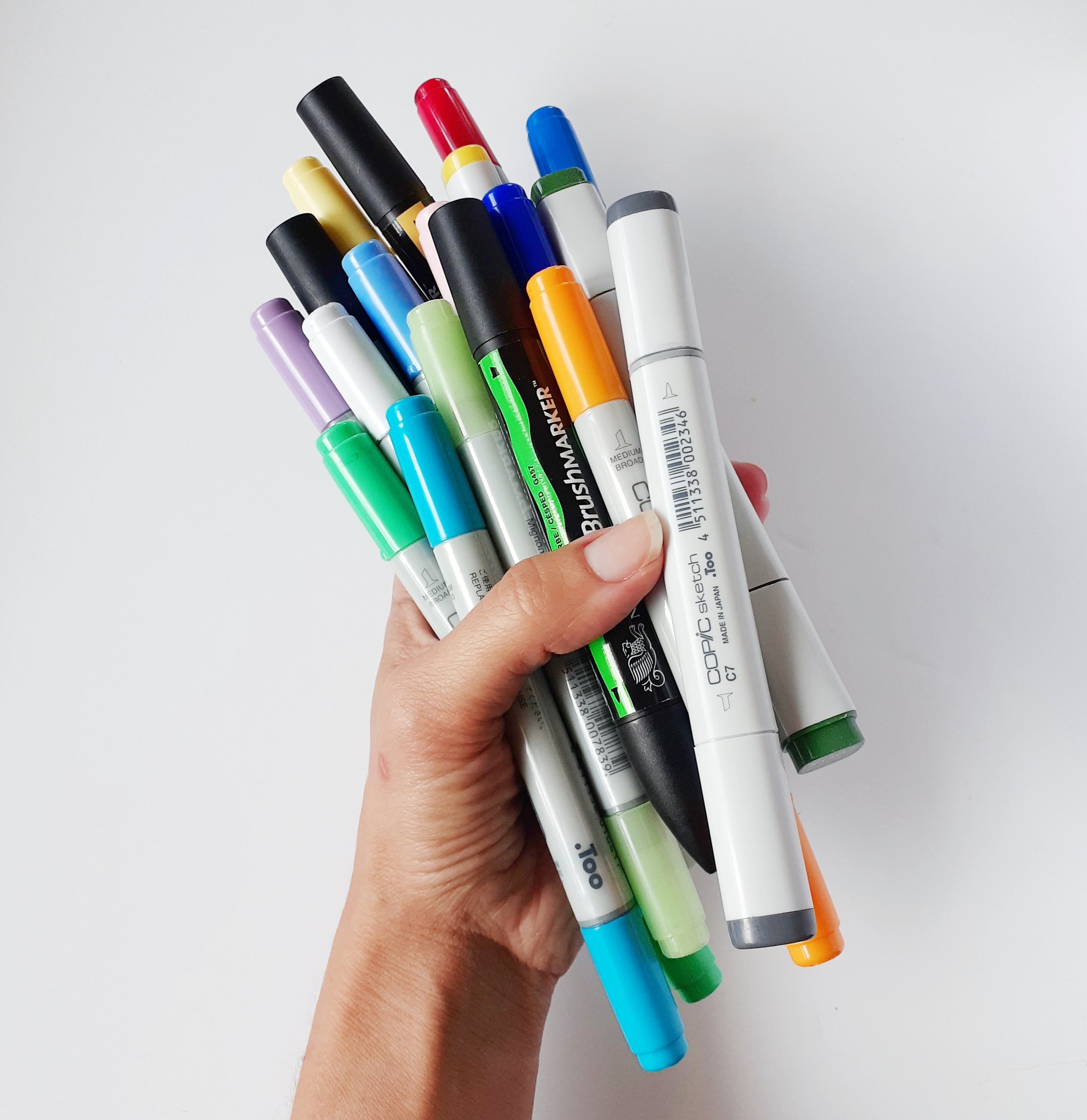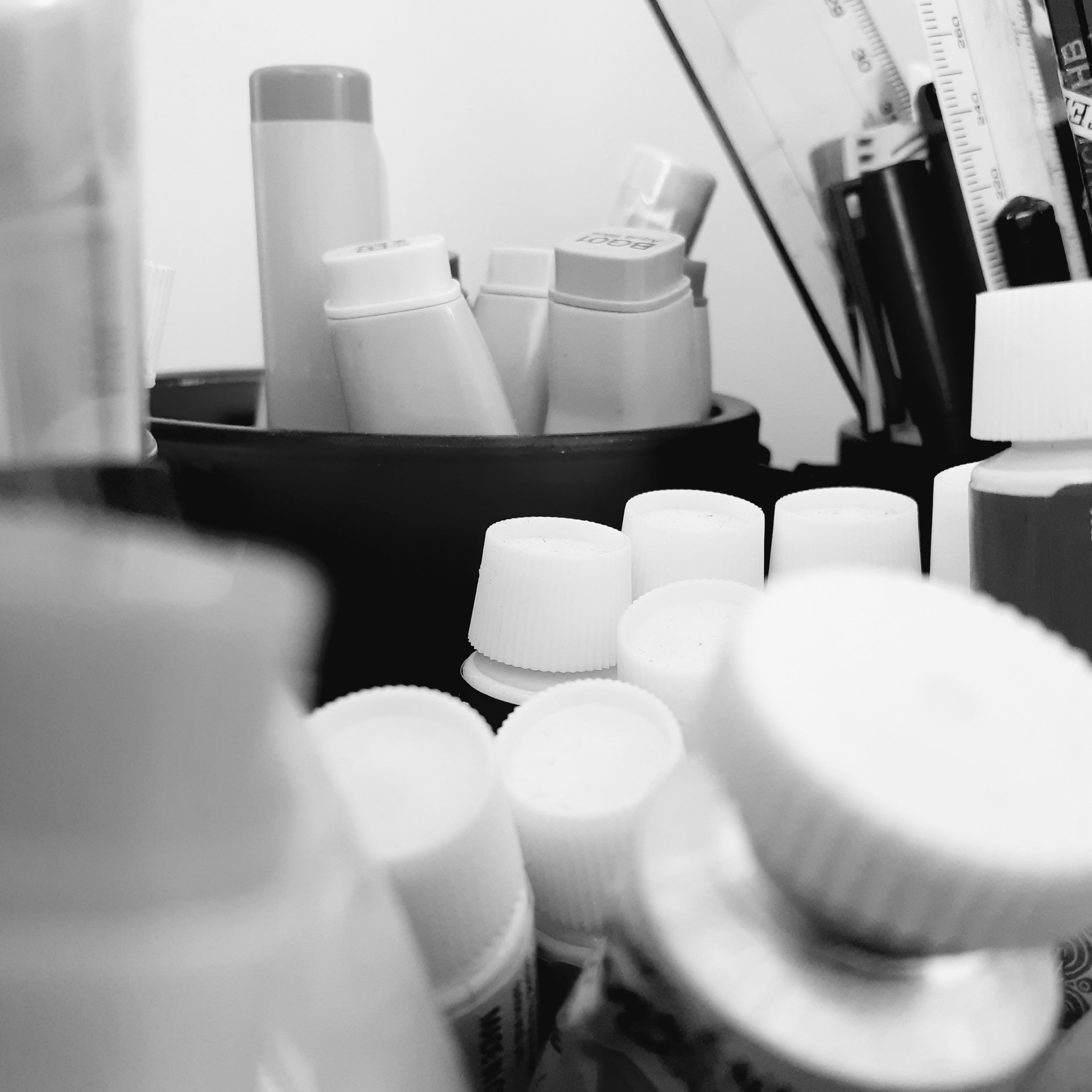Markers require an all or nothing attitude. They can smell hesitance so they work best when you don't overthink it.
Just go for it! Here’s a few really quick tips I use on a daily basis to help me master markers.
Here are a few tips to help you feel more comfortable getting your alcohol markers on the page.
Start by fencing/ framing areas of colour to achieve a neat and clean finish. Creating a frame or boundaries to work within helps to achieve a clean, neat result and helps to outline and breakdown colour blocks into smaller, more manageable areas.
Work quickly and always keep moving so you don’t get spots of over inking. Moving too slowly with markers can cause patches of excess ink, leading to wastage and oversaturation on the paper.
Use the flick/feather technique to get an even coverage of colour without ink wastage on overlapping patches. This techniques allows for coverage of colour with out too much overlap and helps to avoid creating lines in the blocks of colour.
Start with the lightest colour and build through to the darkest colour. I know this is a slightly controversial opinion because this approach uses more ink and takes a little longer but I believe you achieve a better result working this way. Markers are not very forgiving and it can be extremely hard to correct and mistakes as the colour is so bold, working light to dark helps to eliminate colour mistakes.
Use a suitable paper for alcohol markers where possible (I use X-press It blending card) to eliminate peeling and bleeding. Markers require paper that can hold alot of liquid, paper that doesn’t bleed through and soak up to much colour helps to avoid wasting ink.
Blend and build depth using multiple layers of the same colour. While there is an extensive range of colours available in alcohol markers, you can achieve an even graduation and blending of colours but using multiple layers of the same colour
Leave white patches to create highlights and use really dark shades to contrast the white spaces. Don't be scared to use a really dark grey or black to create contrast. Creating contrast can bring light bright colours to life and create depth and form on the page.
Markers take a while to master, practice makes perfect.






